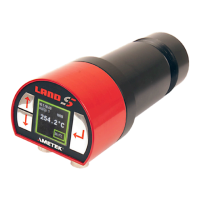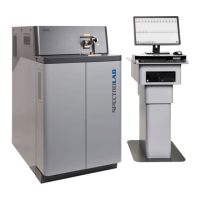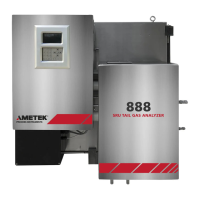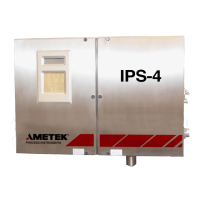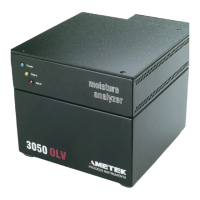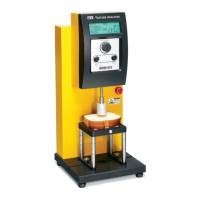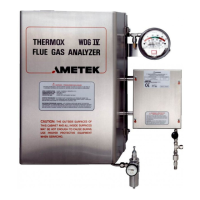6 - 3
Cyclops LPortable Thermometers
User Guide
6.5 Fitting a Close-up Lens
TotaClose-uplenstotheCyclops thermometer,unscrewtheclearprotection
windowfromthelensassemblyandreplaceitwiththerelevantClose-uplens.
TheopticaltransmissioncharacteristicsoftheprotectionwindowandtheClose-
uplensaresimilar.Therefore,therewillbenosignicantcalibrationerror,so
windowcompensationisnotrequired.
6.6 Fitting a Dark Filter
Atsomepoint,typicallyfortargetswithintherange1600°Cto2000°C/2900
to3600°F,theusermaywellnditmorecomfortabletoalsoswitchfromthe
clearprotectionwindowtothedarkprotectionwindow.Theexactlevelat
whichthiswillbefoundnecessarywilldependgreatlyonthetarget’ssizeand
emissivity,andsoislefttotheindividualuser’sdiscretion.
Whenmeasuringtargetsatlevelsabovethatwhichisfoundcomfortable
usingtheclearprotectionwindow(i.e.theimagethroughtheviewnderis
uncomfortablybrightontheeye),adarkltermustbettedinplaceofthe
clearprotectionwindow.
TotadarkltertotheCyclops thermometer,unscrewtheclearprotection
windowfromthelensassemblyandreplaceitwiththedarklter.
Theopticaltransmissioncharacteristicsoftheprotectionwindowandthedark
lteraresimilar.Therefore,therewillbenosignicantcalibrationerror,so
windowcompensationisnotrequired.
6.7 Fitting a Dark Filter to a Close-up Lens
Whenmeasuringtargetsatlevelsabovethatwhichisfoundcomfortableusing
theClose-uplens(i.e.theimagethroughtheviewnderisuncomfortablybright
ontheeye),aClose-uplensandadarkltercombinationmustbettedin
placeoftheclearprotectionwindow.
TotadarklterandClose-uplenscombination,unscrewtheprotection
windowfromthelensassemblyandreplaceitwithaClose-uplens(rst),
followedbyadarklter.Astherewillnowbeanextraopticalelementinthe
sightpathoftheinstrument,awindowcompensationfactorof0.92mustbe
enteredtoallowfortheassociatedenergylosses.SeeSection7.4.10.
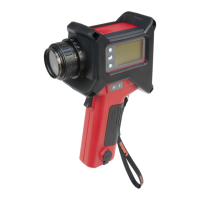
